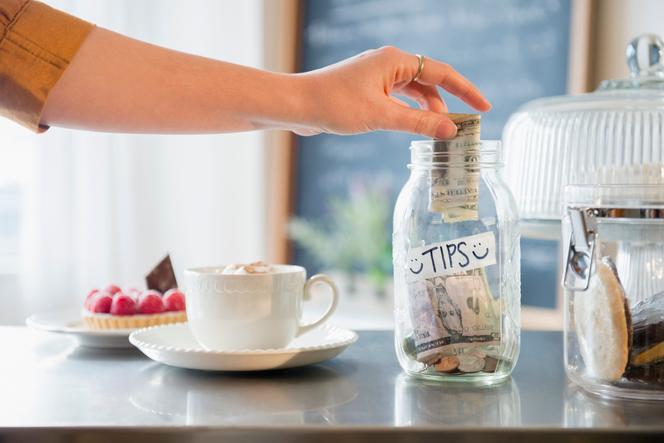


"How much do you tip?" The question has long signaled a tourist in New York. It was understood that the locals knew. Occasionally, a waiter would even add a handwritten note to the bill intended for a table of French diners specifying, with a smiley face, that service was not included. Now, it's the Americans who ask. For takeout, do you leave a tip? And for your coffee, which you carry to your table? What if it's a make-your-own salad bar? Things were simpler when the social rule was clear, as illustrated in a scene from Reservoir Dogs in which one of the film's gangsters, offended, says: "What do you mean, you don't tip?"
Tipping isn't so natural anymore, now that it's asked for anywhere you go, a trend that took hold five years ago when the tablet payment terminal gradually replaced the tip jar at the counter. When paying by credit card, tip suggestions are already given... and at higher levels than in the past. Above all, the tablet has become a must for services where tipping was not commonplace – takeout orders, for example – or for professionals who, until now, did not ask for tips, such as bakers.
In coffee shops, it's a headache. A tip for a cappuccino with a heart in the foam? After all, someone put a lot of effort into making it. But what about a cookie? Or a bottle of water? Recently, in the New York Times etiquette section, a reader asked if she should really "tip" the dermatologist who handed her the payment terminal. Also see the hotel manager at checkout: "How much do you intend to leave the maid?" What can I say? You mean, if I don't leave anything, she doesn't get paid?
According to a survey by personal finance site Bankrate, 41% of Americans polled believe that "businesses should pay their employees better rather than relying so much on tips." While Americans tipped 10% in the 1950s and 15% in the 1990s, today tips more often hover around 20%. Sure, inflation has driven up prices, but why should it drive up tips?
Some of the "tipflation" can be traced back to Covid-19 and the lockdown. "We've largely tipped delivery drivers because they take risks, and restaurants to help them survive," said one New Yorker. Another possible explanation: the tablets, again, which set the standards with their suggestions. When the percentages in the boxes displayed are so precise, they give the impression of a calculation as rigorous as a sales tax amount (18%, 20%, 25% or 30%?). Of course, the more boxes suggest ($1, $2, or $3 for a coffee?), the cruder the option of checking "no tip" seems. And, unlike the money left on the table as you leave the restaurant, the tablet tip is displayed in front of the waiter's eyes, or even those of the next customer.
You have 24.68% of this article left to read. The rest is for subscribers only.
